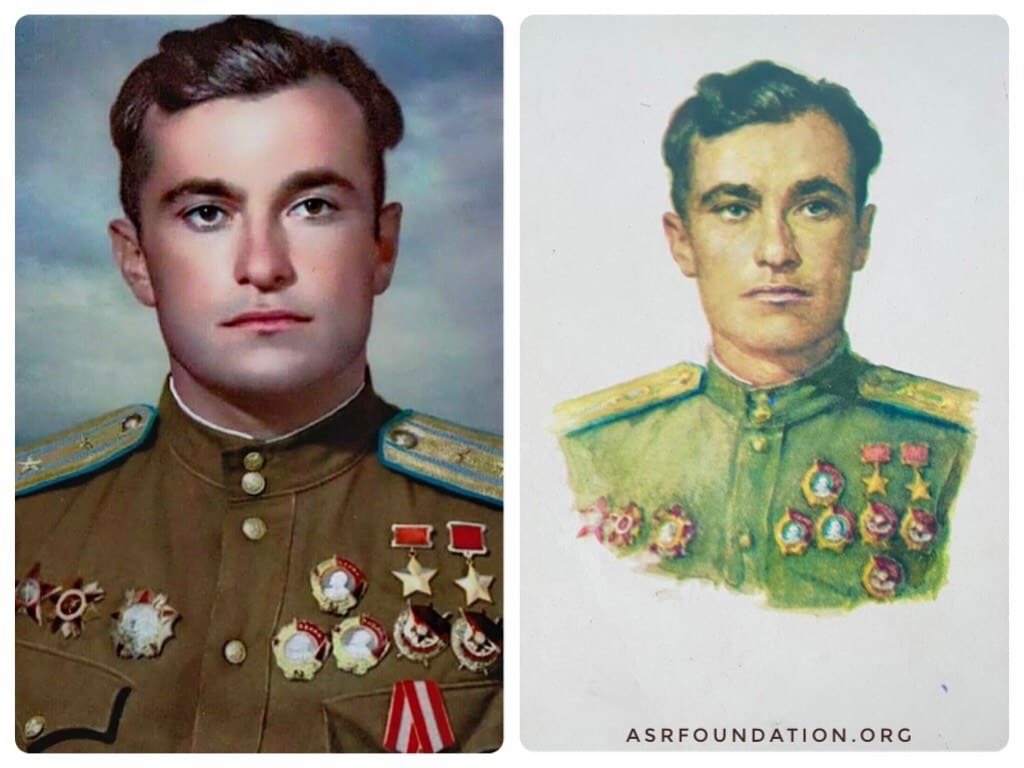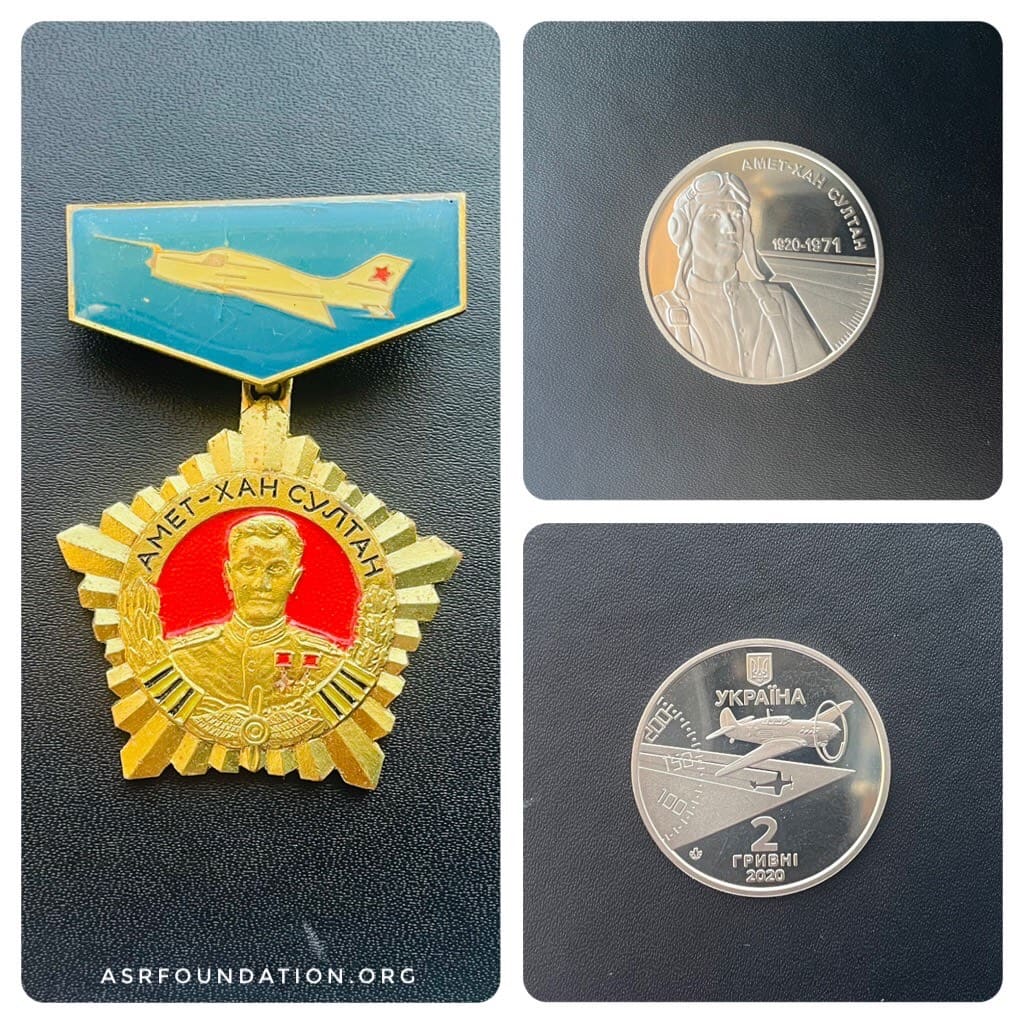
‘When the old eagle anticipates the approach of death, it rushes out of its last strength and rises as high as possible. And then he folds his wings and flies like a stone on the ground. Therefore, the mountain eagles die in the sky, for they are already dead when they hit the ground.’
Amet Khan Sultan (Ahmed Khan Sultan).
This quote is by Amet Khan Sultan. He was a highly decorated Crimean Tatar flying ace. He fought in WWII against the Nazis. He had 30 personal and 19 shared kills; for that, he was twice awarded the highest title of Hero of the Soviet Union.
A staunch supporter of Crimean Tatar, when his people were being deported from Crimea by Stalin’s order, he was quite vocal against it. Many Tatars changed their names and titles in order to protect themselves from persecution by Stalin and his regime. He was a brave fighter pilot who bravely kept his original name and surname. Jokingly, he would say to his colleagues and comrades, ‘I am both Khan and Sultan’. After WWII, he became a training pilot. During a training procedure, he heroically saved an important Soviet flying machine. Due to this, he was recommended again to receive the highest award. When this recommendation reached Stalin’s desk, he became furious: ‘How can a crimean Tatar become a training pilot, let alone receive the highest award?!’ When Stalin was informed about his achievements, he reluctantly agreed to award him, but with a less prestigious award than his Soviet colleagues because of his Tartar origin. He fought for his people as much as he could under a dictatorial Soviet regime. Sadly, during the course of a training flight, he died in 1971.
Recently, I have been conducting some personal research into the role of Russian and Soviet Muslims during the two great wars. I was very impressed with his aforementioned quote, which suggests he didn’t consider himself an ‘old mountain eagle’ as he never gave up; he didn’t want to die in the sky. He died fighting for the oppressed.
Further reading:
A Soviet military ace pilot of Crimean Tatar origin and participant in the Great Patriotic War, he was twice named Hero of the Soviet Union (1943 and 1945), the highest award of the Soviet Union.
A graduate of the 1st Kachin Military Aviation School during the Great Patriotic War, Amet-khan Sultan went from a pilot to squadron commander of the 9th Guards Fighter Aviation Regiment. On May 31, 1942, he made his first aerial ramming of the German Junkers-88 bomber near Yaroslavl. Amet-Khan Sultan participated in the Battle of Stalingrad, during which he established himself as an ace. He fought his last air battle on April 29, 1945, over the Tempelhof airfield located within Berlin, shooting down the Focke-Wulf 190 (30th single-air victory, 49th together with group ones).
After the war, Amet-khan Sultan became a test pilot of the Flight Research Institute in Zhukovsky, a lieutenant colonel (1946), a laureate of the USSR State Prize (1953), and an honoured test pilot of the USSR (1961). During his flight work, he mastered about 100 types of aircraft; his flight time was 4237 hours.
Amet Khan Sultan died on February 1, 1971, while performing a test flight at the Tu-16 flying laboratory, designed to test a new jet engine. He is buried in Moscow at the Novodevichy cemetery.
Soviet state awards and titles:
Medal “Gold Star” of the Hero of the Soviet Union (1943, 1945)
Order of Lenin (1942, February 1943, August 1943);
Order of the Red Banner (1942, 1943, 1945, 1953);
Order of Alexander Nevsky (1944);
Order of the Patriotic War, 1st degree (1945);
Order of the Red Star (1941);
Order of the Badge of Honour (1961);
medals.
Honorary Citizen of the City of Alupka (2010).
Many streets and places in former Soviet Unions are honoured with his name. A square in Simferopol, streets in Alupka, Sudak, Volgograd, Zhukovsky, Kaspiysk, Melitopol, Kazan, and a number of other cities, towns, and villages; a microdistrict in Saki; and an avenue in Makhachkala are named after Amet-khan Sultan. A mountain peak in Dagestan is also named after him; Makhachkala airport; the minor planet (6278) is also called Amet-Khan.
The postcards, commemorative medal, and recently issued memorial coin by Ukraine are from our collection.


Stoke Row's Maharaja's Well, built in 1864, symbolizes Maharaja's charity during English drought. It fostered village growth and remains a local landmark.
